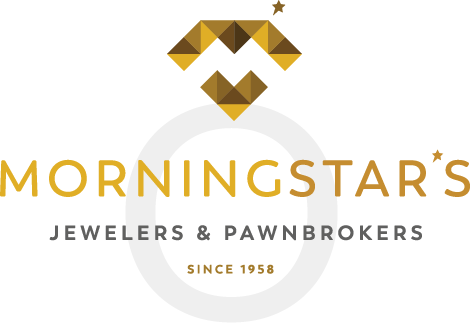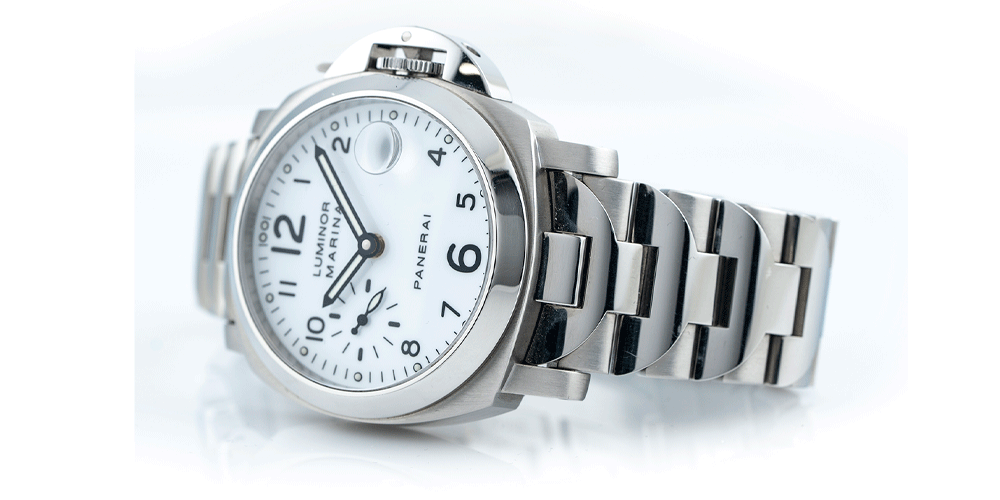Why Pre-Owned Watches Make Smart Investments
Buying a luxury watch is never just about telling time. It’s about craftsmanship, legacy, and — in some cases — a surprisingly smart place to park your money. Pre-owned watches, in particular, offer an intersection of affordability and long-term value that few other collectibles or fashion items can match.
In this article, we’ll break down why pre-owned watches are considered wise investments — not just for collectors, but also for first-time buyers looking for more than just wrist appeal.
Why Pre-Owned Watches Make Smart Investments
Luxury watches are built to last. When maintained properly, they can perform for generations — both as precision instruments and as appreciating assets. This makes them fundamentally different from other luxury goods, which often depreciate the moment they leave the showroom.
But it’s not just durability that makes a pre-owned watch a good investment. It’s the economics of the secondary market.
Luxury Within Reach — Shop Pre-Owned Watches
Discover authentic, high-end timepieces. Each watch is inspected for quality and backed by trust.
Browse Pre-Owned WatchesDepreciation Has Already Happened
One of the biggest advantages of buying pre-owned is that you let someone else absorb the steepest part of the depreciation curve. New watches can lose 20–30% of their retail value in the first year alone. Pre-owned models — especially those that are 2–5 years old — often stabilize in price, meaning your risk of loss is significantly reduced.
In fact, some watches that were originally purchased new and held for a few years can now be bought on the pre-owned market for close to their original price — or higher — depending on demand. Buyers avoid the initial value drop and gain access to pieces that may already be appreciating.
This strategy mirrors how smart buyers shop for cars: a two- or three-year-old model often offers the best balance of value, reliability, and cost. Except with luxury watches, the benefits can actually grow over time rather than fade.
For collectors or investors, this means entry into the market with built-in value. For casual buyers, it’s peace of mind knowing that if your tastes change, your watch will likely hold steady in price — or possibly increase.
Greater Value for Money
Your dollar goes further in the pre-owned market. Instead of buying a brand-new entry-level luxury watch, you could potentially afford a discontinued or higher-tier model in gently used condition. Pre-owned pieces often come with extras like upgraded straps, customized dials, or even rare case materials no longer in production.
This greater purchasing power can allow you to climb the luxury ladder faster and smarter. A $5,000 budget might land you a brand-new midrange piece — or a lightly worn flagship model from a higher-end brand if purchased pre-owned.
Additionally, some pre-owned pieces include hard-to-find collector’s editions or first-generation references that come with their own prestige and resale value.
Value isn’t just measured in price — it’s measured in the quality, character, and history behind each piece. A pre-owned Panerai with a limited-run dial tells a more unique story than a mass-produced, fresh-out-of-the-box equivalent.
It’s not uncommon for a savvy buyer to acquire a vintage IWC or rare Omega for less than the price of a new entry-level Cartier, while gaining a more meaningful investment and richer story along the way.
Market Trends Favor the Secondary Market
As global interest in horology continues to rise — thanks to influencers, auction houses, and media coverage — so too does demand for iconic, rare, and vintage models. With brand new Rolex and Patek Philippe models becoming increasingly hard to get, even at retail, the secondary market has become the go-to for collectors and investors alike.
Moreover, with the rise of trusted resellers and third-party authenticators, the pre-owned space is safer and more transparent than ever.
Platforms like Chrono24, WatchBox, and even in-house boutique programs from major brands now certify and back their listings. Buyers have access to condition reports, authenticity guarantees, and sometimes even warranties — which reduce risk and increase confidence.
Another emerging trend is the rise of fractional investment platforms and watch-focused investment funds. These platforms allow people to invest in shares of high-value timepieces — a testament to the financial legitimacy of luxury watches as assets.
Even YouTube channels, Instagram accounts, and TikTok creators dedicated to luxury watches have transformed the industry, driving up both awareness and secondary market demand.
Tangible Asset in a Volatile World
Unlike stocks or cryptocurrencies, watches are physical, wearable assets. Their value isn’t subject to the same kinds of digital volatility or headline risk. In times of economic uncertainty, many investors seek hard assets — real estate, gold, art, and yes, luxury watches — as a form of diversification.
Pre-owned watches also have the added bonus of being enjoyable to use. You don’t just store it in a vault. You wear it, display it, and build a story around it — all while it retains or grows in value.
They also make excellent generational assets. A well-maintained Rolex GMT-Master passed down from a father to son doesn’t just carry market value — it carries emotional and historical significance.
This hybrid of utility, legacy, and financial durability makes luxury watches unique among physical assets. Even as digital investing grows, there’s something timeless (literally) about an asset you can wear.
Supply Constraints from Brands
Luxury watchmakers like Rolex and Audemars Piguet intentionally limit production to maintain exclusivity. This means demand nearly always outpaces supply. As a result, many buyers turn to the secondary market not by choice — but by necessity.
This ongoing supply imbalance helps keep the pre-owned market strong and can lead to price appreciation over time. A Rolex Submariner purchased pre-owned today might cost more next year simply because of global scarcity.
Even less-hyped models like the Tudor Black Bay or Omega Aqua Terra can see moderate value bumps if demand spikes due to influencer buzz or collector trends.
The brand-driven scarcity also gives sellers more leverage — meaning well-maintained pre-owned models have a natural price floor, especially if they come with original boxes and papers.
What Types of Watches Hold Their Value Best?
While not every timepiece appreciates, certain brands and models have strong track records of maintaining or even increasing their worth.
1. Sport Models from Iconic Brands
Sport watches — especially dive and chronograph models — tend to outperform more formal dress watches in resale value. This is particularly true for Rolex and Omega.
Rolex Submariner: Often considered the safest bet in watch investment. Prices have remained strong across decades.
Omega Speedmaster Professional: Nicknamed the “Moonwatch,” this chronograph has cult status and historical significance.
Rolex Daytona: A favorite among collectors, often commanding prices well above retail on the secondary market.
Tudor Pelagos: Lightweight, durable, and climbing in status as a value-luxury investment.
2. Limited Editions and Discontinued Models
Watches that were made in small quantities or are no longer in production tend to become more desirable with time. This includes models like:
Audemars Piguet Royal Oak “Jumbo” Editions
Cartier CPCP (Collection Privée) watches
Patek Philippe Calatrava references from the 1990s
Omega Seamaster 2254.50 “Sword Hands”
Discontinued models often appreciate simply because there’s no new supply being created — and demand among collectors rarely fades.
Even limited edition Seiko or Grand Seiko models have seen serious upticks in value, as the global market begins to appreciate Japanese craftsmanship on par with Swiss maisons.
3. Vintage Pieces with Original Parts
Vintage watches from the 1940s–1980s can fetch high prices if they are in good condition and retain original parts (dial, hands, movement, bracelet, etc.). A “tropical dial” Rolex GMT-Master or a first-generation Blancpain Fifty Fathoms can easily command five figures or more.
What drives value here is authenticity. Over-polished cases or replacement dials can tank the value, so provenance matters. Many vintage buyers are happy to pay a premium for watches that have aged naturally and come with documentation or a traceable ownership history.
Patina — once considered wear — is now prized. A faded bezel or aged tritium lume can add thousands in perceived value, especially among collectors who view these traits as marks of authenticity and originality.
4. Iconic Design Watches
Design-forward watches like the Cartier Tank, Jaeger-LeCoultre Reverso, and IWC Portugieser have remained relevant across decades. Their enduring appeal makes them safer bets than trendy fashion watches that may fall out of favor.
Watches tied to cultural milestones — such as the Omega Speedmaster’s moon landing or Paul Newman’s Daytona — also see long-term demand, which drives value.
The best design watches strike a balance between form and function. Their ability to transcend fashion cycles gives them unique holding power.
5. Watches with Proven Auction Performance
Watches that have performed well at auctions often continue to do so. Brands like Patek Philippe and Rolex dominate this space, but other surprises include vintage Seiko dive watches or early Panerai models.
If a model or reference has consistently achieved strong prices at auction (Sotheby’s, Phillips, Christie’s), chances are it will remain a good store of value.
Also worth watching: celebrity provenance. A watch once owned by a public figure — even if it’s a modest model — may gain unexpected value due to the story it carries.
Auction performance is one of the best signals for predicting which models will retain liquidity — especially if you ever plan to resell.
The Role of Condition, Provenance, and Service History
A watch’s ability to hold value isn’t just about the name on the dial — it also depends on its:
Condition: Unpolished cases, original lume, and minimal wear command higher prices.
Provenance: Watches with known ownership, especially by celebrities or public figures, have outsized value.
Service History: Buyers prefer watches with documented servicing by the brand or a trusted watchmaker.
This is why Morningstar’s inspects, authenticates, and services every watch we sell — we know collectors and first-time buyers want long-term confidence in their investment.
We also encourage customers to keep records of their service visits and original purchase documentation. These extras can significantly impact resale value.
Final Thoughts
Pre-owned watches aren’t just stylish accessories. They’re wearable assets with the potential for growth, stability, and enjoyment. When you choose wisely, your purchase becomes more than a luxury — it becomes a legacy.
For investment-grade timepieces with full transparency and expert inspection, explore Morningstar’s curated collection of pre-owned watches — or contact us for a one-on-one consultation.
Frequently Asked Questions
Are pre-owned watches really a better investment than new ones?
Yes. New watches lose value quickly after purchase, while pre-owned models often retain or even appreciate in value depending on demand and rarity.
How do I know if a pre-owned watch is authentic?
Buy from reputable dealers who offer authentication, service records, and return policies. Avoid sellers who can’t verify provenance or condition.
What brands hold their value best?
Rolex, Patek Philippe, Audemars Piguet, and Omega are known for strong resale performance, especially popular sport and limited-edition models.
Can pre-owned watches come with warranties?
Yes. Many certified pre-owned dealers offer warranties, even if the original manufacturer's warranty has expired.
What factors increase a pre-owned watch’s value?
Original parts, service records, rarity, condition, and brand recognition all contribute to higher value retention or appreciation.


